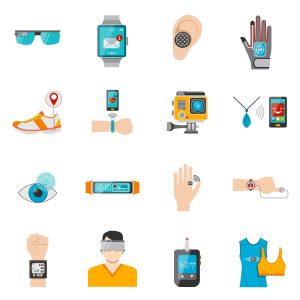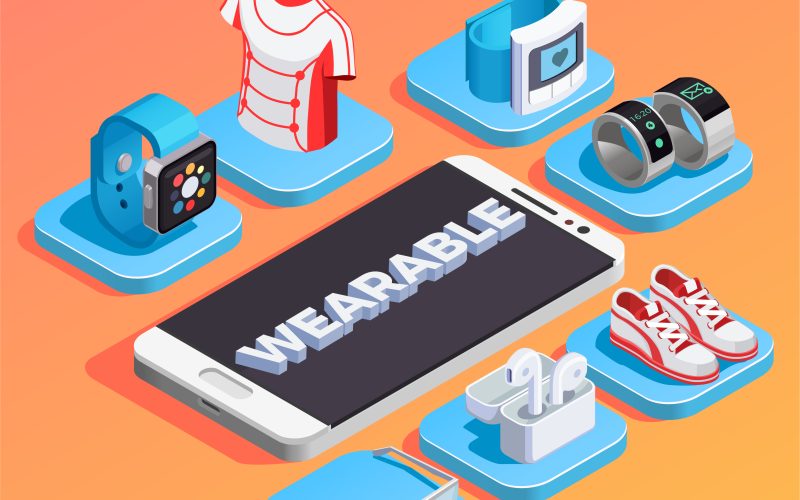What Are Wearables?
Wearables are cutting-edge electronic technology or devices seamlessly integrated into items that can be comfortably worn on the body. These wearable devices are designed for tracking information in real time. Equipped with motion sensors, they capture snapshots of your daily activities and sync this data with mobile devices or laptop computers. Following the invention of smartphones, wearable electronics have emerged as the next significant innovation in the technology landscape.
Interestingly, before wearable technology entered the consumer market, it was extensively used in military technology. These devices played a crucial role in the medical and healthcare sectors within the military. For instance, ‘Wearable Motherboards’ or ‘Smart Shirts’ were used to monitor the health and wellbeing of patients, transmitting Realtime information back to a central hub.
Types of Wearable Devices

The market today offers a diverse range of wearable technology and devices, each designed to serve specific needs:
Smart Watches:
Beyond just telling time, smartwatch provide notifications for calls, messages, emails, and social media updates.
Fitness Trackers:
These devices monitor the number of steps you take each day and continuously track your heart rate. They use this information to calculate and report accurate data on calorie burn and exercise activities.
Head Mounted Displays:
These take you into a world of virtual reality, providing virtual information directly to your eyes.
Sports Watches:
Specifically designed for athletes who enjoy running, cycling, swimming, etc. These devices come with GPS trackers and record information on pace, heart rate, and more.
Smart Jewelry:
Targeting women, these smartwatches are designed as jewelry and notify users of text messages, calls, or emails when their phone is out of reach.
Smart Clothing:
Smart electronic devices are incorporated into wearable clothing, adding an interesting and fashionable twist.
Implantable:
These wearable electronics are surgically implanted under the skin, often for medical purposes such as tracking contraception or insulin levels.
Key Challenges of Wearables
The wearable industry faces significant challenges, primarily in achieving sustainable customer engagement. Many wearable electronics suffer from short-term engagement due to issues like poor quality, difficulty syncing with smartphones, poor battery life, uncomfortable design, and UX problems. Even functionally strong and physically robust wearable devices can fail in the market if they do not create a meaningful impact on users’ lives, habits, or behaviors.
The Need for Wearable Technology

Wearable technology aims to make a significant impact across various fields, including health and medicine, fitness, aging, disability, education, transportation, enterprise, finance, gaming, and music. The goal is to seamlessly integrate into individuals’ daily lives and become a functional part of them.
The handsfree nature of wearable computing devices makes them highly useful for businesses. They simplify tracking emergency and rescue teams, thereby enhancing workplace efficiency and safety. Handsfree access to important data and information through smart glasses and smart watches helps researchers, engineers, and technicians work more efficiently.
Key Challenges of Wearable Technology in Enterprises
As wearable technology becomes more widespread, enterprises see it as a significant opportunity to drive efficiency and improve communication and workflow. Similar to mobile technology, wearable technology is viewed as a disruptive force in the business world. However, the growth and popularity of any technology come with concerns about the risks it poses to data security and privacy. According to a report by PricewaterhouseCoopers, 86% of users express concerns about the use of wearables and the risk of data security breaches. Companies must establish robust policies and procedures before introducing wearable technology for corporate use.
Conclusion:
In summary, while wearable technology and devices like smart watches, smart glasses, and smart clothing offer immense potential, they also come with challenges that need to be addressed to ensure sustainable growth and user adoption.












